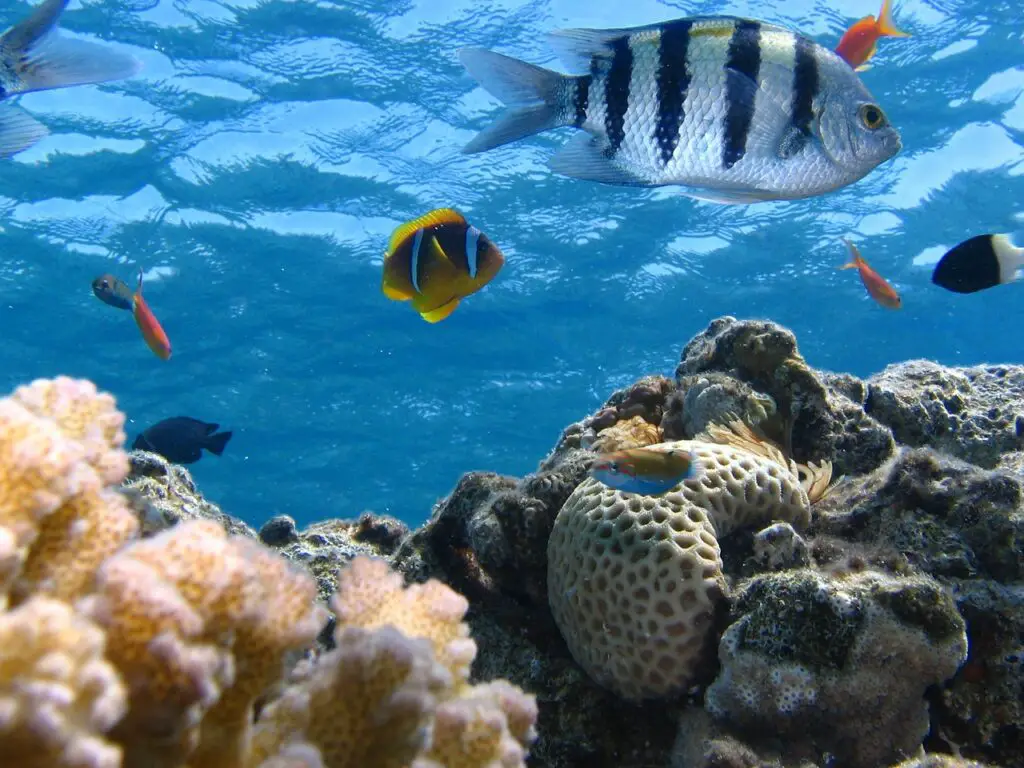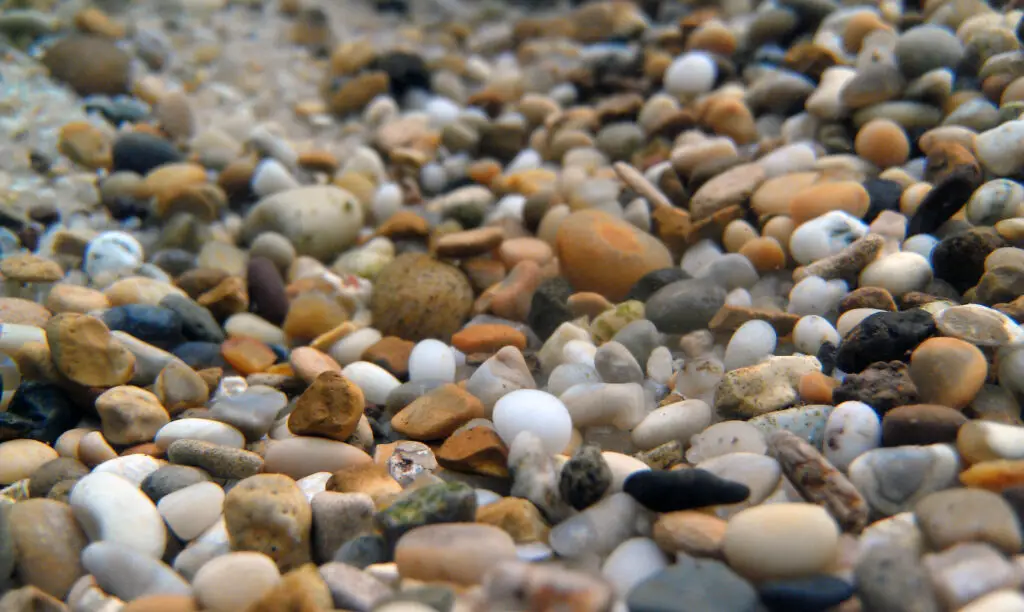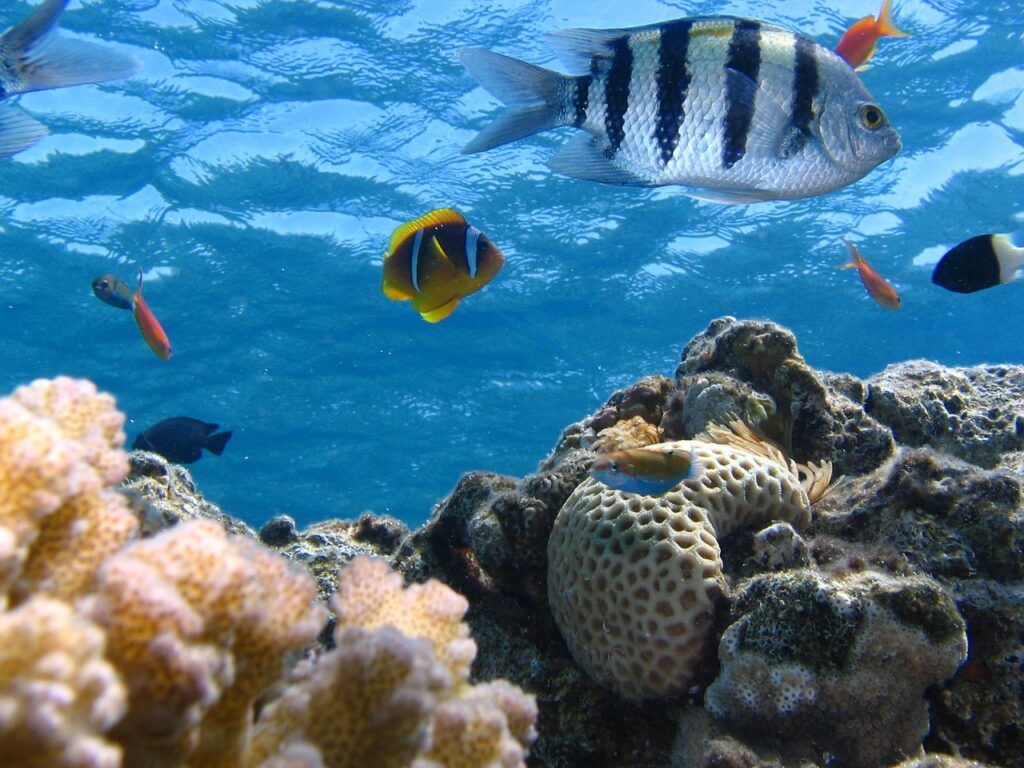In this guide, we’ll be looking at the best saltwater fish for 30 gallon tank setups that you can find and adopt right now.
Are you thinking about setting up your own saltwater tank or reef for tropical fish? We really can’t blame you if you are!
Saltwater fish are some of the most exotic and exciting to keep and watch, but as with other types of fish, they are going to need some looking after.
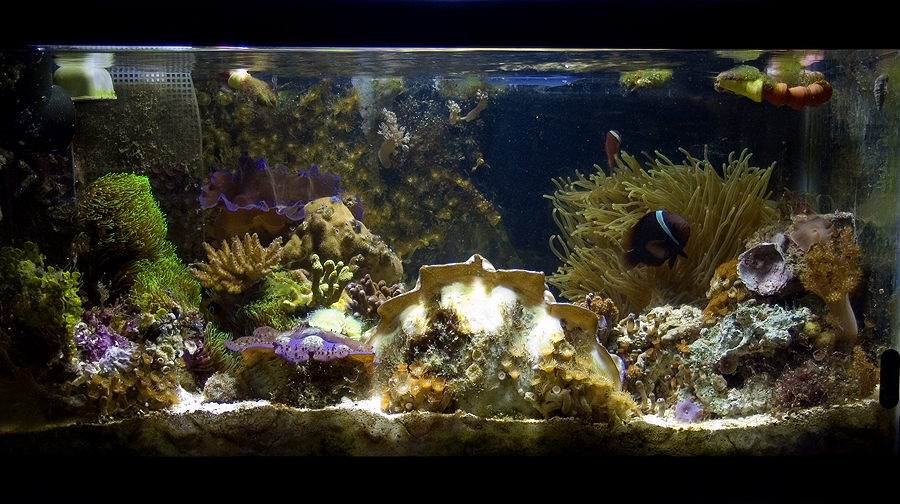
There are all kinds of arguments and bits of research that tell you what you can and can’t do with a 30-gallon saltwater tank.
We’re here to separate the myths from the facts, and to help you find the best possible starter fish to get your 30-gallon tank up and running.
A 30-gallon tank might sound like a lot, but it’s actually one of the recommended volumes that experts suggest to novice fishkeepers.
Let’s dive in and take a look at what you need to know about setting up a 30-gallon saltwater aquarium, and which fish work the best in a setup this size.
How many saltwater fish can I put in a 30-gallon tank?
Generally, you should make sure that you account for 2 gallons per one inch of fish. Therefore, you could easily welcome 15 two-inch fish in a 30-gallon tank.
Of course, not all saltwater fish are going to grow to this size. Many will grow to double this length!
What’s more, when some experts or websites advise you that the max size of a Clownfish, for example, is four inches long, there’s no guarantee that your fish will be exactly that size once it matures. In fact, there’s a lot of variation, and you just need to be prepared.
We would probably advise that you can put 10-15 fish in a saltwater tank that’s 30 gallons in volume, but this is without considering specific species or other needs.
Take a look at the individual growth potential for your chosen fish or creatures and consider a space that’s going to be comfortable for them long-term.
How many clownfish can I put in a 30-gallon tank?
Going by average length of adult Clownfish, you will likely be able to put three to four adults in a 30-gallon tank.
As mentioned, Clownfish can generally grow to be up to four inches long, or a little longer.
Also as advised, this isn’t a golden rule. Some may not ever grow to be this large. However, when it comes to working out the ideal tank size for saltwater fish, it is always better to go bigger than smaller.
Clownfish need a lot of space, wherever possible. While nice to look at and a really rewarding pet, some species can be territorial and aggressive, even with each other.
Therefore, if you want to raise Clownfish, be careful with the tank to fish ratio, as well as who you’re setting up for them as potential tank mates.
How many goldfish can I put in a 30-gallon tank?
Based on the average size of an aquarium goldfish, you will likely be able to hold 7 to 15 of this species in a 30-gallon tank.
This is based on the statistics that goldfish kept in tanks tend to only really grow to be one or two inches long at most. However, there are some goldfish that have bucked this trend and have grown to be even longer.

For example, it’s not impossible for a goldfish to grow to be six inches long! If you really want to be careful, this means you will likely be looking to home five goldfish, minimum, in a 30-gallon tank.
As you can see, this is a real numbers game. It’s so important to get your numbers right, however, if you want your fish and other marine creatures to be happy and healthy.
Space is such a crucial factor, maybe more so than anything else to begin with.
The Best Fish for Your 30 Gallon Tank
Here are some of our favourite fish and marine creatures likely to be ideal for a 30-gallon tank.
If you have a 30-gallon tank and intend to fill it with the rarest and most sought-after marine life on the planet, here are a few you should really be adding to your bucket list.
Don’t worry if you can’t find any of these beasties either in the wild or in stores – try your luck and see what you can spot while out and about!
Damselfish
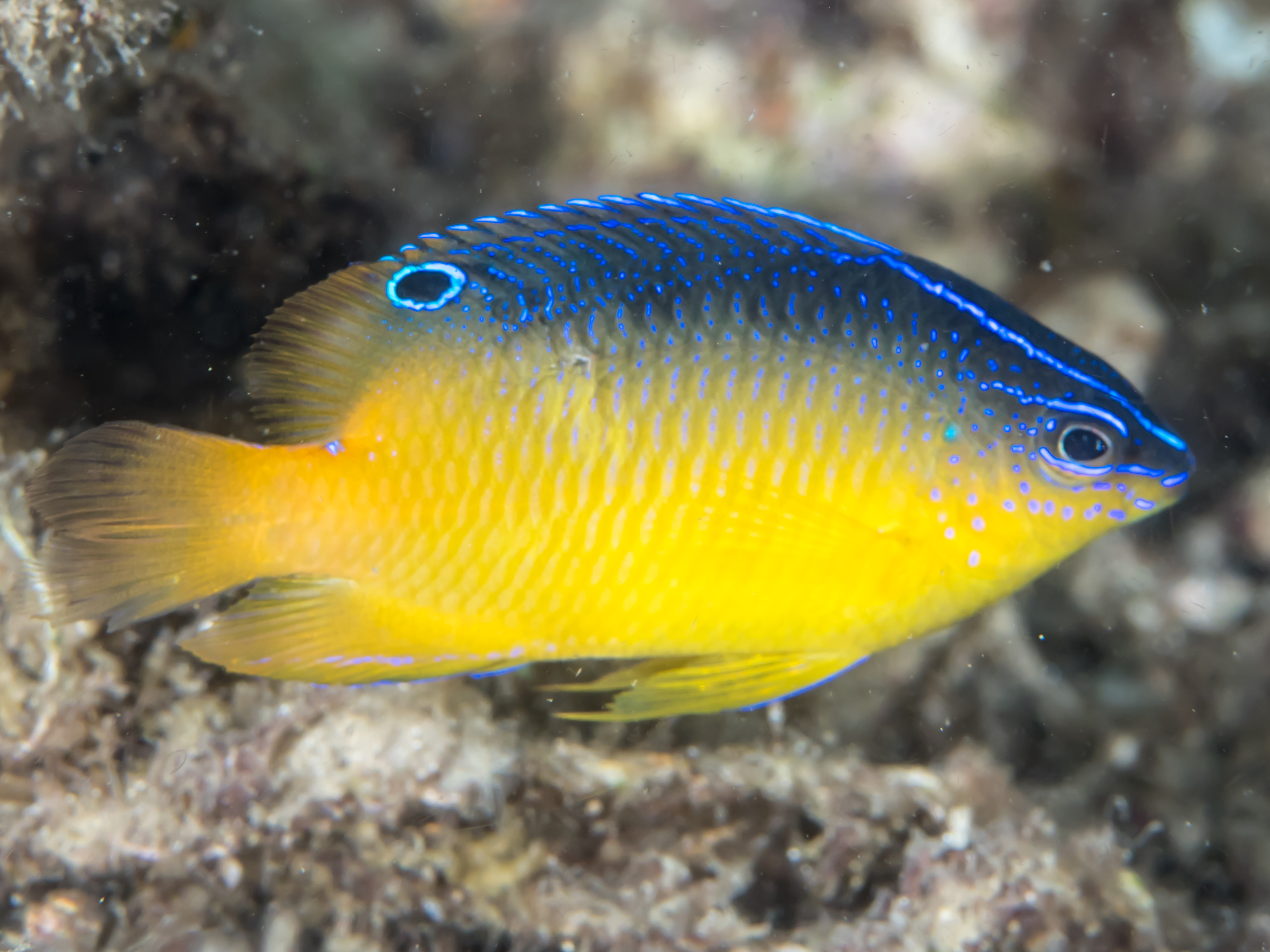
The Damselfish comes in lots of different species and forms, meaning that if you have a 30 gallon tank and want to really brighten up your aquarium, it’s well worth considering giving them a closer look!
Damselfish are great group fish, meaning that you may do best to adopt a few of them at once, ideal if you have a 30 gallon tank that you want to make the most of.
They tend to grow up to 2 inches in length, max, so you will probably do well to adopt around 7 or 8 of them.
However, be careful if you are thinking of mixing them with other fish, as they can be a bit aggressive here and there.
Clownfish

Clownfish are a classic choice for 30 gallon tanks. While they may not be the best tank mates for less aggressive swimmers, Nemo and his pals can grow to a fair size, meaning that you may only be able to fit 4 or 5 of them in a 30 gallon aquarium.
That said, not all Clownfish will grow this big, it’s just something you are going to need to keep in mind.
These are saltwater lovers, which means if you are building a reef tank that’s 30 gallons or larger, definitely make a point of looking at Clownfish as a priority.
Dottyback

Dottybacks can grow to the same length as Clownfish, on the whole, meaning you are going to need to make sure you have a tank that’s big enough to welcome them all. 30 gallons will be more than enough for 4 or 5 of the species.
Dottybacks really are bright and colorful, meaning if you are keen to cheer up your tank, there are no reasons why you shouldn’t look at Dotties first.
These are brilliant tank cleaners, too, meaning if you really want to clear up the nastiness that big tanks can be known to grow, a Dotty will always have your back!
Yellow Watchman Goby
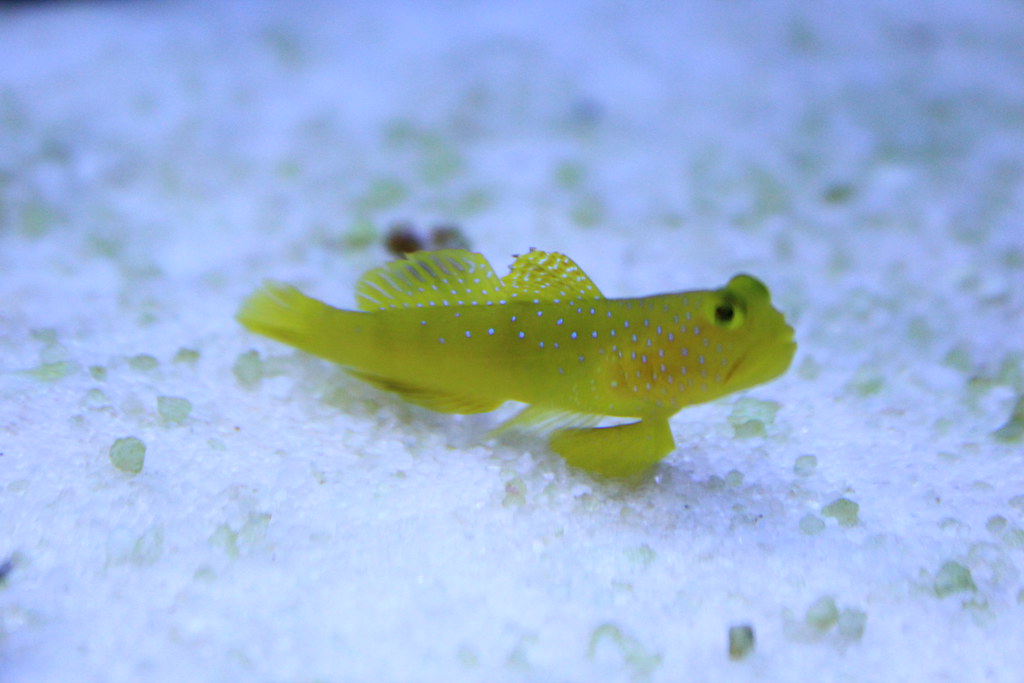
Watchman goby fish make fantastic pets regardless of the size of tank or aquarium you have in place. The fact is, with a 30 gallon tank, you’re going to be able to really light up your room.
Watchman gobies tend to grow to be around 4 inches in length, much like the Clownfish, which means you can expect a 30 gallon tank to hold a small clutch of them.
They are very friendly and super easy to look after, too, providing you make sure to supply and support the basics.
Purple Firefish

Firefish in general are a great choice for small to medium tanks, but with a 30 gallon tank, you can easily house a few at once.
They grow to be around 3 inches in length maximum, which means in a 30 gallon aquarium, you can expect around 5 of them to make their homes fairly comfortably here.
Firefish are just as easy to look after as the watchman goby on the whole. However, many people prefer them because they have a more striking look.
Yellow watchmen tend to be a bit more luminous, whereas purple firefish will add a nice, exotic tinge to your tank. These fish are carnivorous and can be aggressive, so as always, be careful.
Mollies
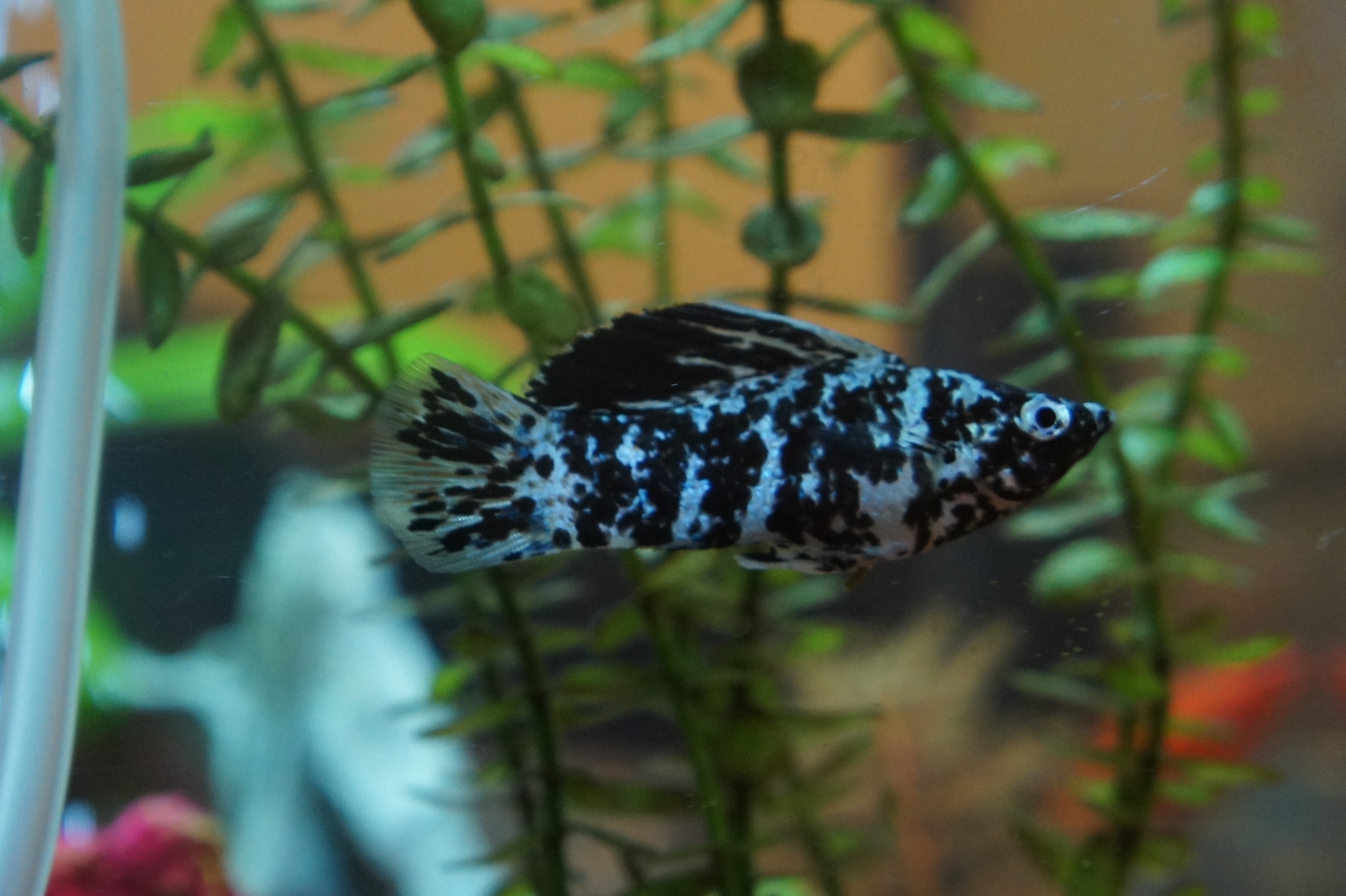
We’ve also mentioned the molly fish in our easiest saltwater fish to raise guide – and they will fit right at home in a 30 gallon tank.
Mollies tend to be around 4 inches in length when fully grown, though that is their maximum size. This means, like Clownfish and some gobies, you can expect to hoist around 4 or 5 of them, comfortably, in a 30 gallon aquarium.
What really drives 30 gallon aquarium owners towards mollies is the fact that there are so many of them.
These are some of the most curious exotic fish, just as well-known for their patterns as they are for their colors and shades.
Is a 30 gallon tank right for me?
We’d actively suggest you get a 30 gallon tank if you are just starting out. Smaller tanks such as nano aquariums are great if you only want a single fish or a couple of the same species – but if you really want to create your own growing aqua ecosystem, then you should really go for the larger option.
30 gallons is actually a good midsize choice, with 50 gallons, 65 gallons and more being great picks once you know a bit more about how to raise and care for fish!

